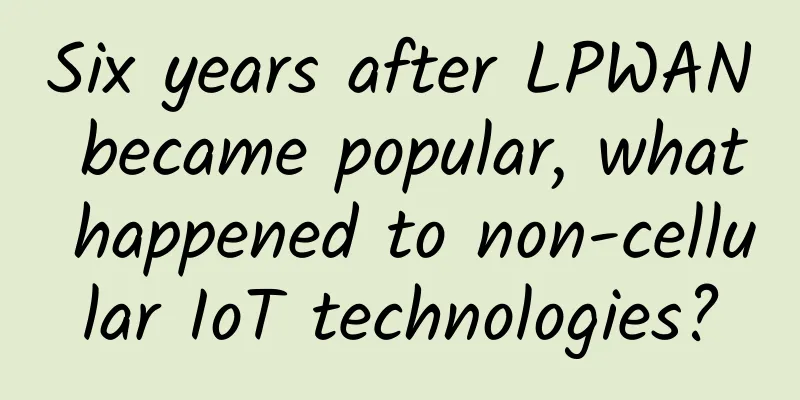ZTE Chief Scientist Talks About the Current Status of 5G

|
[51CTO.com original article] The Internet of Things, autonomous driving, VR\AR, telemedicine, etc. are all emerging technologies that are attracting much attention. The public has heard too much about their exciting simulated future application scenarios, but we have rarely seen their actual practical application. The industry generally believes that the key point is that network demand cannot be met. Even in the 4G era, network broadband has been upgraded, but when faced with the application scenarios of the Internet of Everything envisioned in the future, today's network still seems "exhausted". The Internet of Everything means that all devices can be connected to the Internet. Your car, bicycle, speakers, TV, and even clothing... everything has an "instant online" network demand. Compared with today's network demand, bandwidth demand will also increase by hundreds of times. Obviously, this is beyond the capacity of current network performance. Emerging technologies are like horses that have been waiting for a long time, but are bound by the reins of network performance. Only 5G can liberate them. When will 5G be commercially available? How to achieve 5G? What is the strength of China's 5G? These are the questions that everyone is concerned about. In mid-June, 51CTO reporters had the opportunity to communicate with Tu Jiashun, the top NFV/SDN scientist of ZTE. He introduced us to the development of 5G and the core technology SDN/NFV (virtualization) behind it.
When will 5G be commercially available? Tu Jiashun introduced that first of all, it should be made clear that 5G is not only a super-speed increase, low latency and no disconnection are also important criteria for judging 5G. Compared with 4G, 5G's network speed will be a hundred times faster. We can do a simple conversion. Today, the actual download speed of 4G is 2M/s, so 5G can reach 200M/s (which may not be achieved in the initial commercial use). Tu Jiashun said that the current international delay requirement for 5G is 0.001 seconds, that is, 1 millisecond. So what does 200M/s, 0.001s latency, and no disconnection mean? This means that it is faster than your local disk, which means that you can completely remove your hard disk storage and use the cloud disk as the storage of the device. Tu Jiashun pointed out that the 5G technology is now quite mature, and the commercial time has been determined, and it will enter commercial use in 2020. Global operators have also begun to actively deploy it. Tu Jiashun introduced that ZTE's role is to help operators transform from communication service providers to digital service providers. How to achieve 5G? Taking ZTE's 5G solution as an example, the 5G solution currently provided by ZTE to operators, ElasticNet, mainly implements 5G from three levels. The first is the reconstruction of infrastructure, the second is the reconstruction of network functions, and the third is the reconstruction of operations. Infrastructure reconstruction means that the entire infrastructure is a comprehensive pooling, and the so-called 4G network, 5G network, ofo and other applications are all cloud-based. Functional reconstruction means that traditional communication hardware equipment such as switches and routers will all be software-based. Operational reconstruction means that the operating network is no longer a network facing communication services, but an end-to-end network with terminals, clouds, and value-added services. In layman's terms, it means that all previous services such as Didi Taxi, ofo, and Baidu are deployed on the cloud of infrastructure to fully realize end-to-end transmission. Tu Jiashun added that ElasticNet has been adopted by major well-known operators around the world and is regarded as the most competitive technical solution by Ovum, a world-renowned communications consulting organization. VEON (VimpelCom, the world's seventh largest operator), Telecom Australia (TELEFONICA), France Telecom, Telekom Austria, etc. are all partners of ZTE. Tu Jiashun introduced that according to statistics, the virtualization solution provided by ZTE has reduced VEON's total cost by 30%; ZTE's construction of virtualization for TELEFONICA's 7 branches has reduced TELEFONICA's operation and maintenance costs by 70%. ElasticNet can not only support 5G, but also 3G and 4G. This is an all-round solution, and it can effectively reduce costs. The technology is very mature and is just waiting for the 5G standard (there is no 5G standard yet) and the time point of 2020. 5G Technology Development Trend As mentioned earlier, the important concept of 5G is "cloudification". SDN/NFV is the core technology to achieve cloudification, which can enable the network to achieve elastic supply. At present, global 5G technology providers are already actively active in the open source community. Tu Jiashun introduced that in the original 3GPP era of the communications industry, a solution was repeatedly developed 7 or 8 times, but only 4 companies could win. In addition, the manufacturers who failed in the bidding were equivalent to doing useless work. From the perspective of the industry, this working model is very inefficient. Today, the open source model has accelerated the progress of virtualization technology. Open source allows the discussed solutions to be developed by the best people, and others to supplement their ideas and innovate on this basis. Only by creating new contributions can they be accepted by the entire community. From the perspective of the industry, this way of operation will be efficient, which has promoted the rapid development of 5G's core technology virtualization. Tu Jiashun also introduced ZTE's contribution to the open source community. ZTE is a platinum member of the open source forums ONAP, OpenDaylight, and OPNFV, a gold member of OpenStack and DPDK, and a silver member of Linux Foundation and FDIO... Tu Jiashun believes that open source is an inevitable trend now and in the future. Regarding the future development of 5G in China, Tu Jiashun concluded: In the 3G era, China was a follower; in the 4G era, China was a pacesetter; in the 5G era, China will definitely be the leader. [51CTO original article, please indicate the original author and source as 51CTO.com when reprinting on partner sites] |
<<: H3C Launches Telecom-Grade Cloud Platform at MWC Shanghai
>>: Li Xue: Today's goal is to grow together with the company
Recommend
How does TCP ensure reliable transmission?
There are many factors in the network that may ca...
Lisa Host: Los Angeles Cera Data Center CN2 High Defense VPS monthly payment starts at 40 yuan, support 2 yuan/day trial
I shared information about Lisa hosts in the midd...
What kind of report card did the operators submit?
Over the past three years, my country's 5G co...
Interesting explanation of TCP three-way handshake and four-way wave
Students who have studied computer networks know ...
Digital Stargazing joins hands with Gu'an Tianxia and Yunti to launch new products to explore the value of security services with big data
[Original article from 51CTO.com] On November 29t...
The greater development of 5G lies in industrial applications
[[181724]] Some people say that 4G has changed ou...
How to manage millions of devices in the era of IoT? Look for Wind River DLM!
[51CTO.com original article] On August 22, the &q...
New Track and New Technology|Xinglan Technology was invited to participate in the "2022 API Security Innovation Salon Beijing"
On the morning of April 15, the "2022 API Se...
Asia seizes first-mover advantage, 5G is expected to arrive in 2018
The 5G era is upon us, and with this new wireless...
Huawei releases Net5.5G full range of solutions to stimulate new growth for operators
[Barcelona, Spain, February 26, 2024] During MW...
The battle for lightweight wide area networks: What makes LoRa different?
Technically, the various WAN technologies vary du...
I secretly monitored their communication traffic...
I am a monitoring software. My master spent sever...
SolidSeoVPS: $10/year-1GB/15G NVMe/500GB@10Gbps/Tampa
SolidSeoVPS was founded in 2013 and is a foreign ...
Are wireless networks more energy efficient than wired LANs?
Sustainability and reducing energy consumption ar...
VLAN Centralized Management Protocol (VCMP) You should know
In production environments, we often configure VL...
![[5G Encyclopedia] The mysterious relationship between parameter sets and numerology](/upload/images/67eb9d0a367bb.webp)








